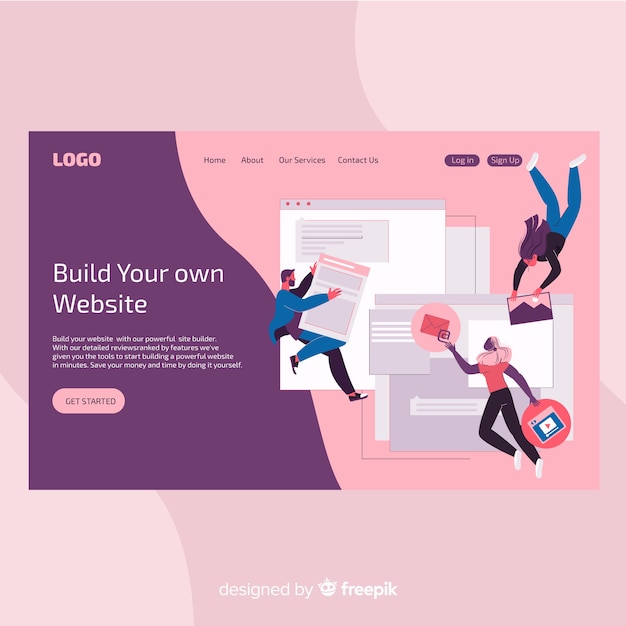Creating a successful mobile app hinges on delivering a stellar user experience. In this article, we’ll delve into the best practices for UI/UX design to help you build engaging and user-friendly mobile applications. This guide explores key principles and practical tips for enhancing user experience in mobile apps: best practices for UI/UX design that will leave your users delighted.
I. Navigation and Layout: The Foundation of a Smooth Experience
A. Intuitive Navigation is Key
Think of navigation as the roadmap of your app. If users can’t find their way around easily, they’re likely to abandon ship. A well-structured navigation system is crucial for a positive user experience in mobile apps: best practices for UI/UX design start here. Keep it simple, predictable, and consistent. Users should always know where they are and how to get back to where they were.
Prioritize clear labeling and visual cues to guide users effortlessly through your app. Avoid overly complex menus or hidden functionalities that might frustrate users.
B. Optimizing Layout for Thumb-Friendly Interaction
Mobile screens are small, and users often interact with them using only their thumbs. Design your layout with this in mind. Place important elements within easy reach of the thumb zone and avoid cramming too much content onto a single screen.
Whitespace is your friend. It helps to create a visually appealing and less cluttered interface, improving readability and overall user experience in mobile apps. Best practices for UI/UX design emphasize the importance of whitespace in mobile design.
C. Screen Real Estate: Less is More
Mobile screens offer limited space, so prioritize content and features. Don’t overload screens with unnecessary information. Keep it concise and focus on what’s essential for the user at that specific moment.
Think about using progressive disclosure to reveal more complex information only when needed. This keeps the interface clean and prevents users from feeling overwhelmed.
II. Visual Design and Branding: Making a Lasting Impression
A. Visual Hierarchy: Guiding the User’s Eye
Visual hierarchy is about arranging elements on the screen to guide the user’s attention. Use size, color, and contrast to emphasize important information and create a clear focal point.
A well-defined visual hierarchy makes it easier for users to scan the screen and quickly find what they’re looking for, enhancing the overall user experience in mobile apps. Best practices for UI/UX design recommend establishing a clear visual hierarchy for optimal usability.
B. Branding Consistency: Building Trust and Recognition
Maintain consistent branding throughout your app. Use your brand colors, fonts, and imagery to create a cohesive and recognizable experience.
Consistent branding builds trust and reinforces your brand identity, creating a more positive and memorable user experience in mobile apps. Best practices for UI/UX design emphasize the importance of brand consistency.
C. Accessibility: Designing for Everyone
Accessibility isn’t just a nice-to-have; it’s essential. Design your app with accessibility in mind, considering users with disabilities. Ensure sufficient contrast between text and background, provide alternative text for images, and make your app navigable using assistive technologies.
Designing for accessibility ensures that your app is usable by everyone, regardless of their abilities. This contributes significantly to a positive user experience in mobile apps: best practices for UI/UX design should always include accessibility considerations.
III. Interaction and Feedback: Enhancing User Engagement
A. Microinteractions: The Little Details That Matter
Microinteractions are small, subtle animations or feedback mechanisms that acknowledge user actions. They can be as simple as a button changing color when tapped or a loading animation.
These small details enhance the sense of interactivity and make the app feel more responsive, contributing to a more engaging user experience in mobile apps. Best practices for UI/UX design recommend incorporating microinteractions to improve the overall feel of the app.
B. Feedback and Confirmation: Keeping Users Informed
Provide clear feedback to user actions. Let users know when an action has been successful or if there’s an error. This helps to prevent confusion and frustration.
Clear feedback is crucial for a positive user experience in mobile apps: best practices for UI/UX design emphasize providing timely and informative feedback to users.
C. Seamless Transitions: Creating a Flow
Smooth transitions between screens create a more polished and professional feel. Use animations and transitions to guide the user’s eye and create a sense of continuity.
Seamless transitions contribute to a more fluid and enjoyable user experience in mobile apps. Best practices for UI/UX design recommend using transitions to enhance the overall flow of the app. Remember, the goal is to deliver the best possible user experience in mobile apps: best practices for UI/UX design are all about making the app enjoyable and intuitive to use.
IV. Comparison Table: Native vs. Hybrid vs. Web Apps
| Feature | Native Apps | Hybrid Apps | Web Apps |
|---|---|---|---|
| Performance | Excellent | Good | Fair |
| Development Cost | High | Medium | Low |
| Offline Access | Yes | Limited | Limited |
| Platform Compatibility | Specific (iOS or Android) | Cross-Platform | Cross-Platform |
| User Experience | Excellent | Good | Fair |
| Development Time | Long | Medium | Short |
| Maintenance | High | Medium | Low |
| Access to Device Features | Full | Limited | Limited |
| App Store Presence | Yes | Yes | No |
Conclusion
Building a successful mobile app requires a deep understanding of user experience in mobile apps: best practices for UI/UX design are constantly evolving. By following the guidelines outlined in this article, you can create engaging and user-friendly apps that delight your users and achieve your business goals. We’ve covered navigation, visual design, interaction, and even compared different app development approaches. Ready to learn more? Check out our other articles on [link to another article] and [link to another article] for more in-depth insights into mobile app development and user experience.
FAQ about User Experience in Mobile Apps: Best Practices for UI/UX Design
What is UI/UX design in mobile apps?
UI (User Interface) is what users see and interact with. UX (User Experience) is how users feel when interacting with the app. Good UI/UX makes an app easy, enjoyable, and efficient to use.
Why is good UI/UX important for mobile apps?
Good UI/UX leads to higher user satisfaction, increased app usage, better reviews, and ultimately, greater success for the app.
What are some common UI/UX mistakes to avoid?
Cluttered screens, confusing navigation, slow loading times, and ignoring accessibility guidelines are common mistakes that hurt the user experience.
How can I improve the navigation in my mobile app?
Use clear and concise labels, implement a logical navigation structure (like tabs or a hamburger menu), and provide intuitive search functionality.
What is the importance of visual hierarchy in mobile app design?
Visual hierarchy guides the user’s eye to the most important elements on the screen, making it easier for them to find what they need and understand the information presented.
How can I make my mobile app accessible to users with disabilities?
Follow accessibility guidelines (like WCAG) by providing alternative text for images, ensuring sufficient color contrast, and supporting assistive technologies like screen readers.
How do I test the UI/UX of my mobile app?
Conduct user testing with real users to observe how they interact with your app and gather feedback on their experience. Use analytics to track user behavior and identify areas for improvement.
What are some tools I can use for mobile app UI/UX design?
Figma, Adobe XD, Sketch, and InVision are popular tools used for designing and prototyping mobile app interfaces.
What is the role of user research in mobile app UI/UX design?
User research helps you understand your target audience, their needs, and their behaviors. This understanding is crucial for designing an app that meets their expectations.
How do I keep up with the latest trends in mobile app UI/UX design?
Follow industry blogs, attend design conferences, and explore popular apps to stay informed about the latest design trends and best practices.





